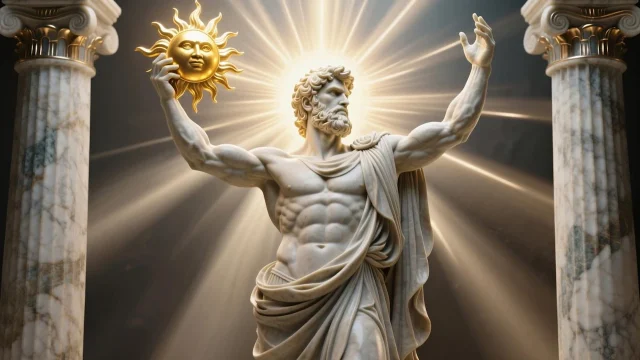The Babylonians had many gods. Some of them were Sumerian, others Akkadian and other later groups, and others imported from the mountainous regions to the north and east of Mesopotamia. These Babylonian gods reflected the diverse needs and fears of different peoples.
Image gallery of Babylonian gods
Babylonian gods
The Babylonians and Assyrians were a conservative people, and the priestly class, to whose work we owe our knowledge of the Babylonian religion, faithfully collected and recorded all local traditions and beliefs, regardless of where they came from. Their religion remained a living entity, and they had not lost faith in the existence or power of the Babylonian gods we will see below.
1.- Anu, BÄ“l, and Ea
At the head of the company of gods may be the great triad of deities Anu, BÄ“l, and Ea, whose spheres of influence together encompassed the entire universe. Anu was the god of the sky, the god of the earth and of humanity, and Ea was the god of the watery abyss beneath the earth.
In a very early period in the history of Sumer, we find these three deities mentioned in close connection with each other under the Sumerian names Anna (Anu), Enlil (BÄ“l), and Enki (Ea).
2.- Lugalzaggisi
He was one of the first Sumerian rulers whose reign we have evidence of, and thus we can trace the existence of this great triad of gods back to the very beginning of history. During later periods, the connection between these deities, as the three great gods of the universe, remained intact. Each member of the triad had his own center of worship.
3.- BÄ“l
As already mentioned, he was identified by the Semites with the Sumerian deity Enlil, whose cult in E-kur, his temple in the city of Nippur, was the oldest local cult of which we have evidence in the archaic inscriptions that have been recovered.
4.- Sin, Shmash, and RammÄn
After these three deities with their world domination, a second triad can be established, consisting of the two great gods of light, Sin and Shamash, and the god of the atmosphere, RammÄn Sin, the moon god, also identified with Nannak, had two centers of worship, the temple E-gish-shir-gal in Ur and the temple E-khul-khul in Kharran, the former being the oldest.
5.- Nabū
Considered the god of Borsippa, a city that is marked today by the mound of Birs Nimrud, and which, built a little southwest of Babylon on the opposite bank of the Euphrates, was in its later period little more than a suburb of the capital. God of knowledge and writing.
6.- Ishtar
This deity seems to have absorbed the power and influence sometimes attributed to other goddesses. She was identified with the Sumerian goddess Ninni, and in Assyrian inscriptions she became the wife of the national god Ashur.
7.- Apsu
Sumerian and Akkadian god of the primordial fresh waters—as opposed to the primordial bitter waters of Chaos.
8.- Beletseri-Akkadian
God of the Underworld, who kept records of human activities so that he could advise on their final judgment after death. She is called the Queen of the Desert.
9.- Kulla
The Babylonian god who restores temples.
10.- Kusag
God who is the high priest of the gods, the patron of priests in Babylon.
Conclusion
At one time, many scholars believed that Babylonian civilization had a purely Semitic origin, and more than one writer on the religion of that country has based his work on the fundamental thesis that the Semitic Babylonians, and they alone, were the creators of the complicated system of religious practice and belief that we know existed from a very early period on the banks of the Euphrates.
It is important to note that belief in the Babylonian gods is deeply rooted in the cultures of various peoples who, regardless of whether they worshipped the gods as a way of life, closely linked everything related to their daily lives with the worship and admiration of the deities.

